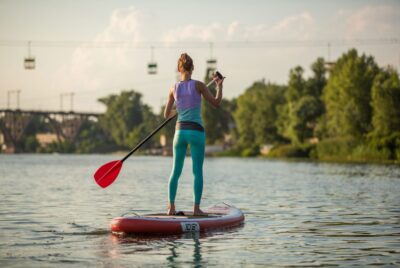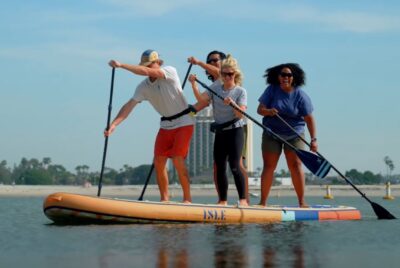Prone Paddleboard: The Definitive A-Z Guide
*We may earn a commission for purchases made using our links. Please see our disclosure to learn more.
Ever seen a prone paddleboard?
They look amazing, right?… It’s because they are!
In this article – I’m excited to share with you the wonderful world of prone paddle boarding. So, if you’re looking to switch up your paddleboarding routine or simply want to try something new, prone paddle boarding is a fantastic option that offers a unique and exhilarating experience on the water. In this article, I’ll guide you through the essentials of prone paddleboarding, covering everything from its definition and benefits to getting started and exploring various locations. So, let’s dive right in!
| Looking for our best paddle board product recommendations? Check the Paddleboard Insiders Buyer Guides |
Table Of Contents
- Origins of The Prone Paddleboard
- Which Is Better? Prone Paddle Boarding or SUPing?
- Benefits of Prone Paddle Boarding:
- Getting Started:
- Choose the Right Prone Paddleboard Equipment:
- Safety Considerations:
- Paddling Technique:
- Exploring Prone Paddle Boarding Locations
- Tips and Suggestions for Getting On A Prone Paddleboard:
- Conclusion: Ready To Get On A Prone Paddleboard?
- FAQs (Frequently Asked Questions)
What is Prone Paddleboarding?
Prone paddle boarding involves lying face down on a paddleboard and propelling yourself through the water using your arms. It has a rich history rooted in ancient Polynesian culture, where it was a means of transportation and a way to catch waves. Today, prone paddle boarding has evolved into a popular water sport that attracts people of all ages and fitness levels. today you’ll find paddleboarding all over the world, from South Africa to Malaysia! But what are the origins?
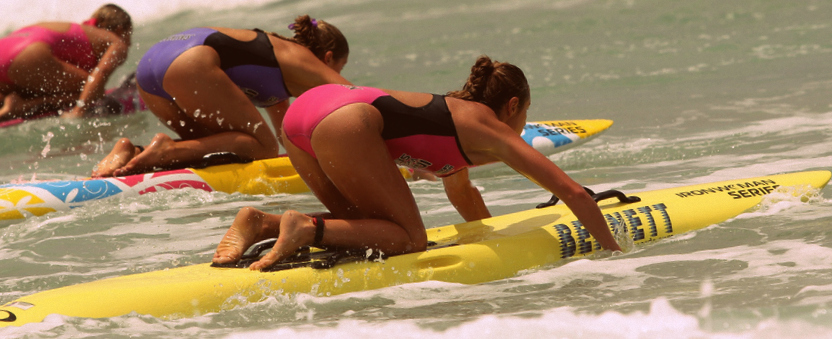
Image Source: https://www.totalsup.com/
Origins of The Prone Paddleboard
Prone paddle boarding has a fascinating origin story. It traces back to the ancient Polynesians, who used wooden boards called “olo” or “alaia” for transportation and wave riding. These early pioneers would lie face down on their boards and paddle with their hands to navigate through the water. Over time, prone paddle boarding became deeply ingrained in Polynesian culture and eventually spread to other parts of the world, evolving into the sport we know today.
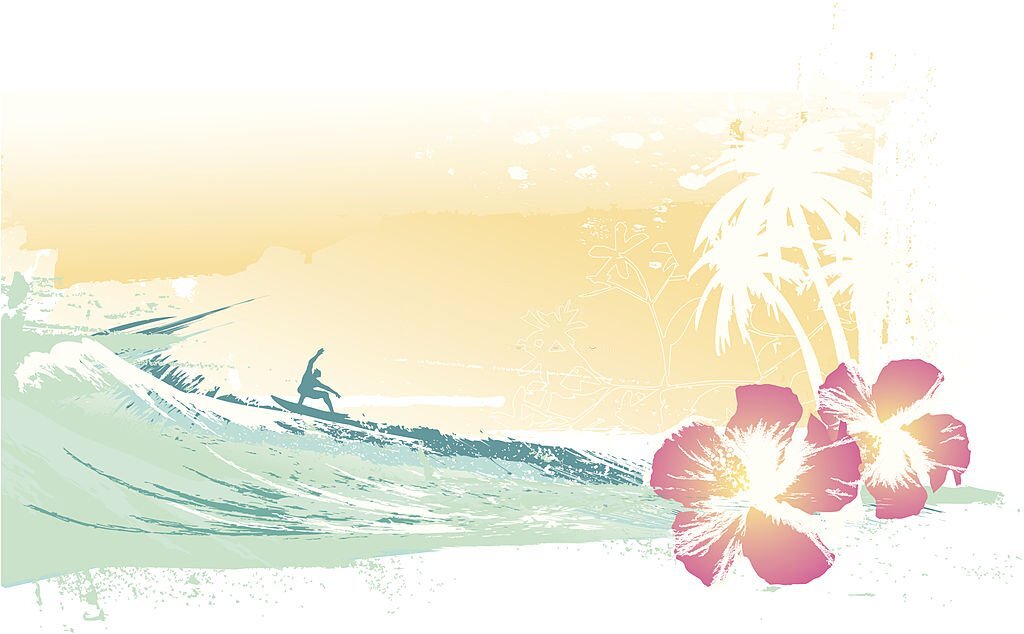
Which Is Better? Prone Paddle Boarding or SUPing?
Stand-up paddleboarding (SUPing) and prone paddle boarding are two popular water sports that share similarities but also have distinct differences.
Prone Paddle Boarding
In prone paddle boarding, as mentioned earlier, you lie face down on the paddleboard and use your arms to propel yourself through the water. It requires upper body strength and core stability to maintain balance and maneuver the board effectively. Prone paddle boarding offers a unique perspective as you glide across the water, closer to the surface and in direct contact with the elements.
Stand-Up Paddleboarding (SUPing)
On the other hand, stand-up paddleboarding (SUPing) involves standing upright on a larger board and using a paddle to move through the water. SUPing offers a higher vantage point, providing a better view of the surroundings. It engages the entire body, including the legs and core, and offers a great full-body workout.
While both sports share the joy of being on the water and the benefits of paddling, they cater to different preferences and skill sets. Prone paddle boarding is ideal for those who enjoy a more intimate and close-to-the-water experience, while SUPing appeals to those who prefer a higher viewpoint and the opportunity to engage their legs more.
Now that we’ve explored the origins of prone paddle boarding and compared it to SUPing, let’s delve deeper into the benefits of prone paddle boarding.
Benefits of Prone Paddle Boarding:
Prone paddle boarding offers a range of benefits that contribute to physical fitness, mental well-being, and overall enjoyment of the sport.
Physical Fitness
Engaging in prone paddle boarding provides an excellent full-body workout. The paddling motion targets the upper body, including the arms, shoulders, and back muscles. The constant adjustments to maintain balance activate the core muscles, strengthening the abdominal and lower back areas. Additionally, the continuous paddling action helps improve cardiovascular fitness, endurance, and overall physical conditioning.

Core Strength and Balance
Prone paddle boarding requires a high level of core strength and stability. Balancing on the board and maneuvering through the water engage the deep muscles of the core, improving overall stability and posture. As you progress in the sport, you’ll notice an increase in core strength and a greater ability to maintain balance in various conditions.
Low-Impact Exercise
One of the significant advantages of prone paddle boarding is that it is a low-impact exercise. The buoyancy of the water reduces the strain on joints, making it suitable for individuals with joint issues or those recovering from injuries. It provides a gentle yet effective way to improve fitness without subjecting the body to excessive stress.
Connection with Nature
Prone paddle boarding allows for a unique connection with nature. Being close to the water’s surface and having an unobstructed view creates a profound sense of immersion in the natural environment. You can explore serene lakes, meandering rivers, and even ride exhilarating waves along the coastline, all while experiencing the beauty and tranquility of nature.
Mental Well-being
In addition to the physical benefits, prone paddle boarding offers numerous advantages for mental well-being. The rhythmic paddling motion combined with the peaceful surroundings promotes relaxation, reduces stress levels, and clears the mind. It provides a meditative escape from the demands of daily life, allowing you to rejuvenate and recharge.
Now that you’re familiar with the benefits of prone paddle boarding, let’s explore how to get started and ensure a safe and enjoyable experience.
Getting Started:
Embarking on your prone paddle boarding journey is an exciting endeavor. Here are some essential steps to help you get started on the right foot.
Choose the Right Prone Paddleboard Equipment:
Selecting the appropriate paddleboard and equipment is crucial for a comfortable and enjoyable experience. Prone paddleboards are typically longer and narrower than traditional SUP boards, providing better maneuverability and performance. Consider factors such as board length, width, and volume based on your skill level, weight, and intended use.
The easiest way to get your feet wet with a prone paddleboard without the steep price tag is to use inflatable sprint boards.
My Top Picks For A Beginner Prone Paddleboard:
The Bluefin Sprint Carbon

Where To Buy: Amazon
Features & Specs:
- Complete set that includes everything you need to get started in prone paddleboarding
- Includes pumps, straps, bag and paddle (if you don’t want to prone paddle anymore)
- This is the BEST way to get into prone paddleboarding without breaking the bank.
The Sprint Carbon is an innovative inflatable sprint SUP that takes performance to the next level. It incorporates cutting-edge features such as carbon stiffening rails with Flex Reduction System (FRS) and AIR DUO dual inflation chamber technology, making it the stiffest touring SUP in its class, rivaling traditional hardboards. Whether you’re a seasoned paddler or new to the sport, this board offers added sturdiness and stability, making it an ideal choice for general paddlers looking to explore the world of touring.
The key to the Sprint Carbon’s exceptional performance lies in its carbon fiber rail layer. The board features robust carbon fiber rovings woven into a diagonal twill pattern, creating a 3K carbon fiber rail layer. This unique construction allows for both stiffness and flexibility in a lightweight material. To enhance tension and rigidity, the carbon mid-rail is heat-welded between internal and external rail tape, resulting in unparalleled strength.
One of the standout advancements in iSUP construction is the Independent Inflation Loop. With the Sprint Carbon, this central inflation loop is separate from the main air chamber, providing incredible durability, rigidity, and high volume. This design also offers an added safety feature as the board can even float on the inflation loop alone. This means you can paddle with confidence, knowing that your board is built to withstand various conditions.
The Wowsea Swift S2
Where To Buy: Amazon
Features & Specs:
- High quality military grade PVC makes this extremely durable and stable.
- It’s designed to be a precision board that can cut through the water quickly.
- Its large 14′ dimension means it is perfect to lie on it and paddle prone.

The SWIFT S2 inflatable stand-up paddleboard is not only excellent, durable, and stable but also an amazing choice for prone paddleboarding. Its precision design and construction make it perfect for enthusiasts who prefer paddling in a prone position. With a dropstitch density of 11200 per m² and double-layer military-grade PVC rail, this board ensures remarkable rigidity and durability, allowing you to confidently navigate through the water.
Measuring 14′ in length, 28″ in width, and 6″ in thickness, the SWIFT S2 provides exceptional stability when fully inflated to 15 PSI, which is essential for prone paddleboarding. The wider dimensions provide a solid platform for increased balance and control, enabling you to maintain a comfortable and steady position while paddling.
Additionally, the special design of the board allows for a lower air pressure, less than 7 PSI, without affecting its overall performance. This unique feature, indicated by the stationary dial pointer on the pump gauge, ensures that the board remains stable and responsive, providing a superior prone paddleboarding experience.
The SWIFT S2 also comes equipped with a high-quality paddle and a bolt lock fin system. The adjustable paddle can be easily broken down into three separate pieces, allowing for convenient storage and portability. This is especially advantageous for prone paddleboarding, as it provides ease of transportation when maneuvering in and out of the water.
Safety Considerations:
Prioritize safety when practicing prone paddle boarding. Always wear a personal flotation device (PFD) and a leash to ensure your safety in case you fall off the board. Check the weather conditions and be aware of any potential hazards in the water, such as rocks or strong currents.
My Favorite Life Jacket For Paddleboarding:
Onyx MoveVent Dynamic Life Vest:
Where To Buy: Amazon
Features & Specs:
- Complete set that includes everything you need to get started in prone paddleboarding
- Includes pumps, straps, bag and paddle (if you don’t want to prone paddle anymore)
- This is the BEST way to get into prone paddleboarding without breaking the bank.

This exceptional vest is designed to provide maximum mobility and a secure fit, ensuring a worry-free paddling experience. With its sculpted flexible foam design, the vest conforms to your body shape and stays in place even during vigorous prone paddling sessions.
Rest assured knowing that the Onyx MoveVent Dynamic vest is U.S. Coast Guard approved. It meets the highest safety standards, giving you the confidence to explore the waterways with peace of mind. Crafted from heavy-duty nylon fabrics, this vest is built to withstand the rigors of outdoor adventures. It resists tears and punctures, ensuring durability and longevity.
To keep you cool and comfortable, the vest features strategically placed mesh ventilation panels on the front and lower back. These panels promote air circulation, preventing overheating even in warm weather conditions. Additionally, the vest incorporates SOLAS grade reflective material, enhancing visibility in low-light situations and increasing safety on the water.
Convenience is key, and the Onyx MoveVent Dynamic vest delivers. It includes an expandable zippered pocket, providing ample space to store small essentials such as keys, snacks, or a phone. You can keep your belongings within reach without sacrificing mobility or safety. The vest also features a lash tab, perfect for attaching small accessories like a whistle or safety light.
My Favorite Leash For Prone Paddleboarding:
BPS Ultralite ‘Storm’ Leash

Where To Buy: Amazon
Features & Specs:
- 10ft in length
- Coiled so it doesn’t tangle, get stuck in reeds or drag in the water
- Exceptional quality.
- Very comfortable
This leash is the perfect companion for prone paddlers seeking a lightweight and reliable leash. Designed with both performance and comfort in mind, this leash offers unparalleled security while feeling virtually weightless. Once you have it on, you’ll forget it’s even there.
It’s extremely easy to use – Simply untie the leash string, attach it to your board’s leash attachment point, and you’re good to go. It’s that easy.
The BPS ‘Storm’ leash boasts a range of features that ensure a comfortable and hassle-free experience. The ankle-fitting padded Neoprene cuff is exceptionally comfortable, allowing you to paddle for extended periods without any discomfort. The quick-release tab offers convenience and ease of use, giving you the ability to detach the leash swiftly when needed.
Say goodbye to tangled leashes. The BPS ‘Storm’ leash is equipped with Double Stainless Steel swivels that prevent annoying tangles, allowing you to focus on your paddle strokes with confidence. The 5.5mm Coiled Cord, lightweight yet sturdy, can stretch up to an impressive 10 feet, providing ample freedom of movement on the water. Thanks to the coiling design, the leash eliminates any leash drag, keeping it lifted on the back of your board and out of the water. This feature minimizes the risk of snagging submerged objects, ensuring a smooth and uninterrupted paddle.
The leash cuff also features a hidden key pocket, allowing you to safely store your keys while you enjoy your paddling session. No need to worry about losing them in the water or leaving them unattended on the shore.
| Here are my top prone paddle boarding accessories: The 23 Best Paddleboard Accessories That You Need In 2025 |
Paddling Technique:
Learning proper paddling techniques is essential for an enjoyable and efficient prone paddle boarding experience. Keep your arms straight and use your core muscles to generate power while paddling. Practice different stroke techniques, such as the crawl stroke and the torpedo stroke, to improve your efficiency and speed.
Now that you’re equipped with the knowledge of getting started, let’s explore the different locations where you can indulge in prone paddle boarding.
Exploring Prone Paddle Boarding Locations
Whether you prefer serene lakes, coastal waters, or thrilling surfing spots, there are countless locations where you can indulge in the joys of prone paddle boarding.
Coastal Waters
Prone paddle boarding in coastal waters allows you to explore scenic coastlines, spot marine wildlife, and experience the thrill of riding waves. Be sure to check local regulations and surf conditions before heading out.
Lakes and Rivers
If you prefer calmer waters, lakes and rivers provide a tranquil environment for prone paddle boarding. Enjoy the serenity of nature as you glide across calm waters, surrounded by picturesque landscapes.
Surfing Spots
For the adventurous souls seeking an adrenaline rush, prone paddle boarding in renowned surfing spots offers an exhilarating experience. Catching waves and riding them with your body in perfect sync with the board is an unforgettable sensation.
All you have to do is click your mouse (or use your finger) to move around the map and get an idea of some of the best places to paddleboard in a certain location.
Or you can enter your location by clicking the red button below the guide to save some time.
And don’t forget that you zoom in closer to make sure that you can find street address of your next paddleboarding spot.
Now that you’re familiar with the different locations, let’s dive into some tips and suggestions to enhance your prone paddle boarding journey.
Tips and Suggestions for Getting On A Prone Paddleboard:
To make the most of your prone paddle boarding experience, consider the following tips and suggestions:
Start with Short Sessions
If you’re new to prone paddle boarding, start with shorter sessions to gradually build endurance and allow your body to adapt to the movements. As you become more comfortable, you can extend your paddleboarding sessions and explore new locations.
Practice Proper Body Positioning
Maintaining the correct body positioning on the board is crucial for balance and efficiency. Keep your chest lifted, engage your core, and distribute your weight evenly on the board. Avoid tensing up and remember to relax your muscles to conserve energy during longer paddling sessions.
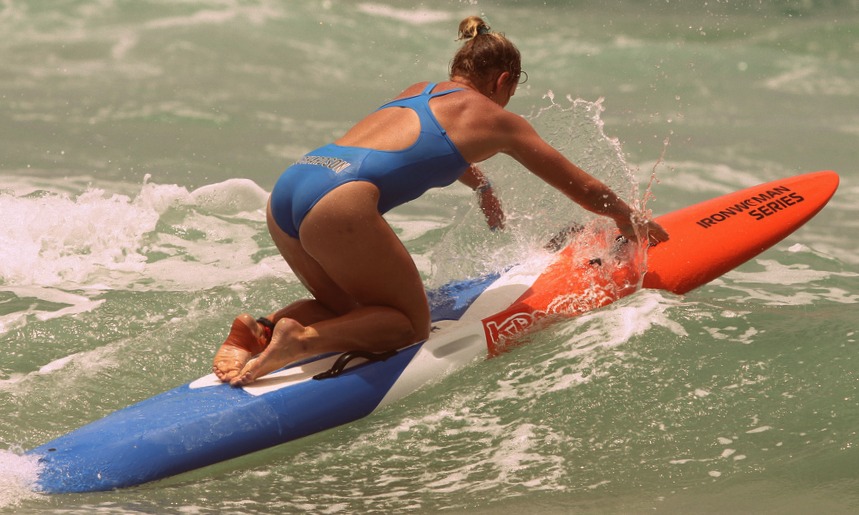
Focus on Technique
Pay attention to your paddling technique. By mastering proper stroke techniques and focusing on your form, you can paddle more efficiently, conserve energy, and enhance your overall performance on the water.
Stay Hydrated & Sun-Protected
When engaging in any water sport, it’s essential to stay hydrated and protect yourself from the sun’s harmful rays. Drink plenty of water before, during, and after your paddleboarding sessions, and apply sunscreen to exposed skin to prevent sunburn.

The Sun Bum Spf 50 Sun Lotion is a thing of beauty!
This is the stuff that every watersport enthusiast should be using every day! It’s moisturizing, water resistant for 80 minutes… And it smells like summer. I really like this sunscreen lotion and I couldn’t recommend it more. If I had to give a water lover a gift… It would be this.
Conclusion: Ready To Get On A Prone Paddleboard?
Prone paddle boarding offers a unique and rewarding way to connect with nature, improve fitness, and experience the joys of being on the water. With its rich history, distinct benefits, and diverse locations, prone paddle boarding caters to both beginners and experienced paddleboarders alike. By following the tips, techniques, and safety guidelines provided in this article, you’ll be well-prepared to embark on your own prone paddle boarding adventures. So grab your paddleboard, embrace the serenity of the water, and immerse yourself in the world of prone paddle boarding!
| Looking for insider guides to some amazing paddle boarding locations? Check the Paddleboard Insiders Location Guides |
FAQs (Frequently Asked Questions)
Is prone paddle boarding suitable for beginners?
Absolutely! Prone paddle boarding is suitable for beginners as well as experienced paddleboarders. It offers a low-impact workout and can be adjusted to different skill levels.
Do I need to be a strong swimmer to try prone paddle boarding?
While it’s always advisable to have basic swimming skills, being a strong swimmer is not a requirement for prone paddle boarding. However, wearing a personal flotation device (PFD) is essential for safety.
Can I use a regular paddleboard for prone paddle boarding?
While it’s possible to use a regular paddleboard for prone paddle boarding, it’s recommended to invest in a board specifically designed for this activity. Prone paddle boards offer better stability and maneuverability, enhancing your overall experience.
If you’re looking for the ultimate beginner prone paddleboard to get your feet wet. Check this board out.
How long does it take to learn prone paddle boarding?
The time it takes to learn prone paddle boarding varies from person to person. With regular practice and proper guidance, you can become comfortable on the board within a few sessions.
Is prone paddle boarding safe?
Prone paddle boarding is generally safe if proper safety precautions are followed. It’s important to wear a PFD, use a leash, and be aware of your surroundings. Additionally, it’s advisable to paddle in areas suitable for your skill level and to avoid adverse weather conditions.
| Make sure that you have all the most essential accessories for your trip: The 23 Best Paddleboard Accessories That You Need In 2025 |



